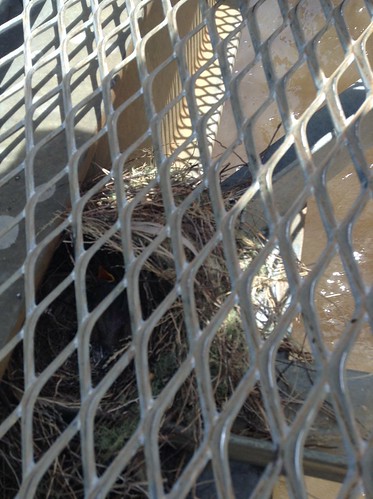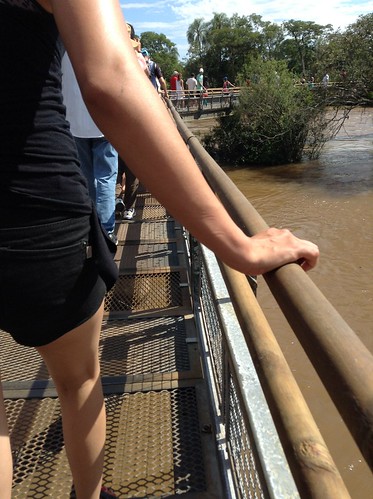This is a big waterfall.

Straddling the river-border of Brazil and Argentina, it’s called either Cataratas do Iguaçu or Cataratas del Iguazú, depending where you’re standing.
Iguaçu vs. Iguazú, and even if you don’t give a damn, the difference means a lot to an American, as I just reported in an article for Fusion.
By measure of water-flow, it’s the world’s fourth-largest waterfall, something like four-times as watery as Niagara Falls on the border of the US and Canada. By measure of “curtain-width,” it’s just behind Victoria Falls on border of Zambia and Zimbabwe.
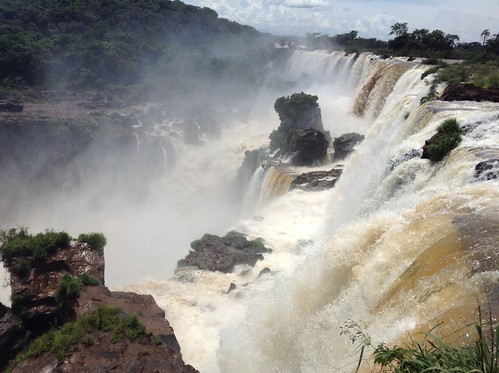
But only at the border of Brazil and Argentina will you hit visa troubles if you want to see the whole of the World Heritage Site.
Take Tom Pelisson, a fellow New Englander who I bumped into on the Argentine side. While most foreigners can freely cross into Brazil, Tom would have first needed to find a Brazilian embassy or consulate back home and apply in person for the $160 visa with proof of income and other documents — an act of “reciprocity” because of similar US levies on Brazilian tourists. To get into Argentina, however, an American only needs to pay an online fee — no visa.
“It’s just not worth it,” Tom (of Bristol, RI) told me of the hassle to visit Brazil. “And how many waterfalls can you really look at, anyway?”
Wise words from Tom, and so I’ll try to limit the number of photos from when I visited on January 7.
My first few pics are of the central falls known as Paseo Garganta del Diablo (the Devil’s Throat), which sounds like something from a Stephen King novel. The semi-circular falls curve so tightly, and pour so ferociously… it’s like the Earth is swallowing itself.
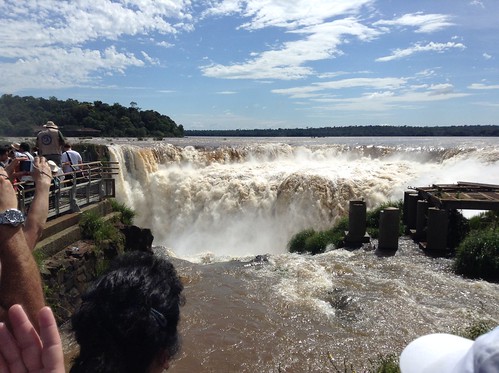
And that’s just one of hundreds of waterfalls here. Everywhere you look, water seems to be pouring down from the Paraná Plateau. Even just calling it a waterfall doesn’t do justice. It’s more like a water canyon. This was the backdrop for several scenes in “The Mission” starring Robert De Niro, including the opening montage of a priest sliding over the falls on a cross.
But like Tom said, you can only stare at water for so long. At which point most tourists start feeding the coatis, a long-nosed raccoon-like scavenger that has infested the park. They’re ever-ready to snatch a fallen cookie or fruit. In this photo, the coatis are ripping into an apple. I also saw some alligator-sized lizards crawling in the forest.

Most impressive was seeing a wild toucan perched in a tree, showing off its beautiful rainbow-colored beak. I was bummed, however, to learn that a toucan’s body is not blue, as I had been misled to believe for the past 32 years by the Fruit Loops mascot Toucan Sam.
I climbed down a series of walkways and paths to where speedboats waited to whisk tourists upriver and directly beneath the roaring falls. The ride was similar to the Maid of the Mist boat tour at Niagara Falls, though faster and shorter. I liked the experience at Niagara, and I liked it here at Iguazú, the water coming down so hard that I couldn’t open my eyes, like some primal baptism of “negative ions” that a crazy American girl from the hostel told me about (the ions are negatively charged, but positively good for the body, she said — actually, maybe Brazil has it right to not want Americans entering).
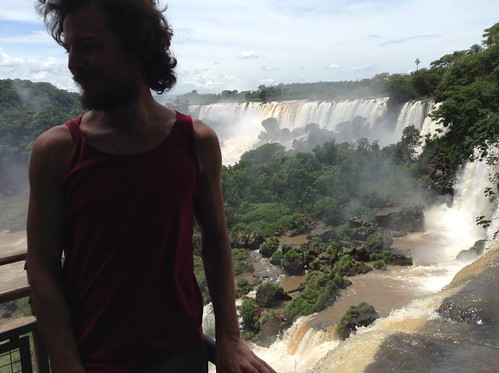
To reach the aforementioned Devil’s Throat, you’ve got to walk over a half-mile pedestrian walkway elevated above the river. That’s where I started chatting with a Canadian woman, who described herself as an avid bird-watcher and retired geologist whose PhD dissertation was that dinosaurs went extinct in part from the disappearance of bee pollen (fascinating, that you can carbon-date pollen!).
As we returned on the grated walkway, she noticed a bird chirping loudly from a nearby branch. And she must have sensed the bird was angry at us, because she had the mind to look down and notice a bird’s nest directly below our feet. And inside the straw nest was a baby bird (photo below), its tiny orange beak pointed up and opened wide, hoping for food…
Talk about a depressing metaphor to spoil my joyful trampling over nature!

